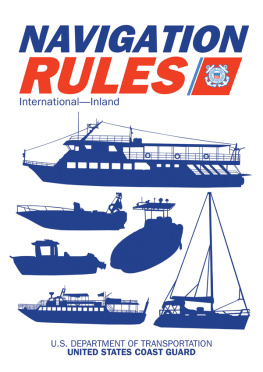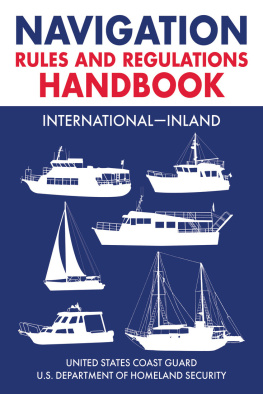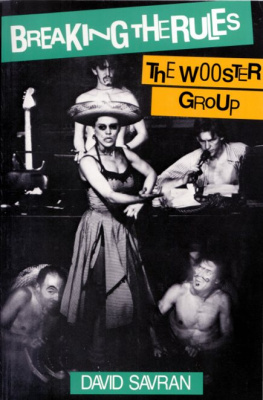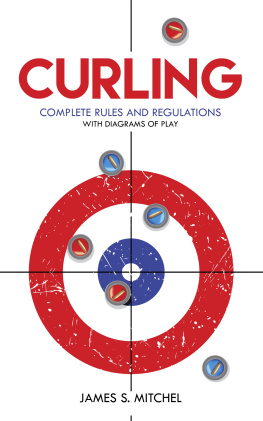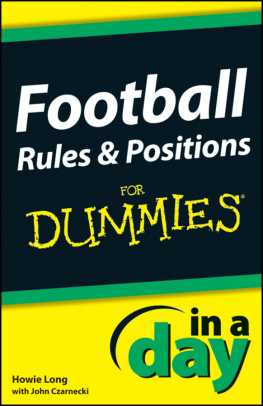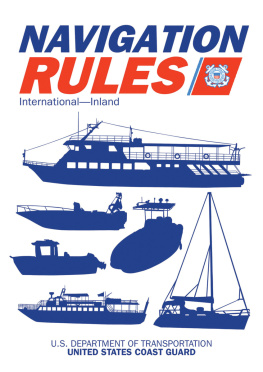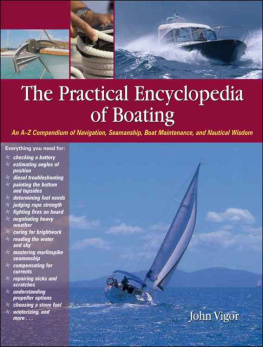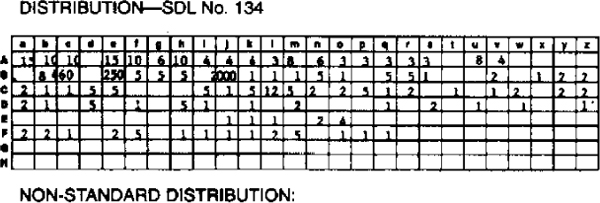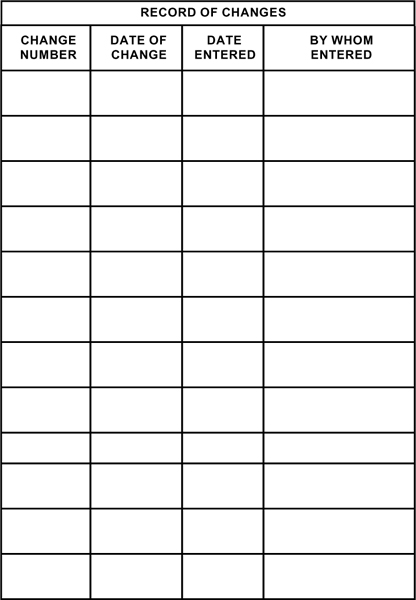Copyright 2011 by Skyhorse Publishing, Inc.
All Rights Reserved. No part of this book may be reproduced in any manner without the express written consent of the publisher, except in the case of brief excerpts in critical reviews or articles. All inquiries should be addressed to Skyhorse Publishing, 307 West 36th Street, 11th Floor, New York, NY 10018.
Skyhorse Publishing books may be purchased in bulk at special discounts for sales promotion, corporate gifts, fund-raising, or educational purposes. Special editions can also be created to specifications. For details, contact the Special Sales Department, Skyhorse Publishing, 307 West 36th Street, 11th Floor, New York, NY 10018 or info@skyhorsepublishing.com.
Skyhorse and Skyhorse Publishing are registered trademarks of Skyhorse Publishing, Inc., a Delaware corporation.
www.skyhorsepublishing.com
10 9 8 7 6 5 4 3 2 1
Library of Congress Cataloging-in-Publication Data is available on file.
ISBN: 978-1-61608-243-7
Printed in China
COMDTINST M16672.2C
1 October 1995
COMMANDANT INSTRUCTION M16672.2C
Subj: Navigation Rules, International-Inland
1. PURPOSE . This instruction forwards International and Inland Navigation Rules and Regulations for use by Coast Guard personnel.
2. ACTION . Area and District Commanders, commanders of maintenance and logistics commands and unit commanding officer shall ensure implementation and compliance with this manual.
3. DIRECTIVES AFFECTED . COMDTINST M16672.2B is cancelled.
4. DISCUSSION .
a. This manual contains the International Regulations for Prevention of Collisions at Sea, 1972 (72 COLREGS). It also contains the Inland Navigation Rules which were enacted by law on 24 December 1980 and became effective for all Inland waters except the Great Lakes on 24 December 1981. The Inland Rules became effective on the Great Lakes on 1 March 1983. Some differences do remain between the International and Inland Rules. The side-by-side presentation of the Rules in this publication will allow mariners to determine those differences.
b. On 19 November 1989, nine amendments to the 72 COLREGS became effective. These nine amendments are technical in nature and are incorporated in this publication. The Coast Guard has adopted several amendments to the Inland and International Rules and Annexes which are also included in this revision. This publication includes all revisions through 30 September 1995.
COMDTINST M16672.2C
5. ORDERING INFORMATION.
a. Following initial distribution of this publication, Coast Guard and Navy units should order additional copies from:
Defense Mapping Agency
Combat Support Center
Washington, D.C. 20315-0030
Attn: PMSR
b. The public may purchase this publication from the U.S. Government Printing Office (GPO) at GPO Bookstores located in many Cities, from GPO sales agents located in principal ports or by telephone at (202) 783-3238. The book is also available for order by mail from:
Superintendent of Documents
U.S. Government Printing Office
PO. Box 371954
Pittsburgh, PA 15250-7954
6. CHANGES AND CORRECTIONS. Notices of changes to the Navigation Rules and Regulations will appear in the Federal Register, Local Notice to Mariners, Weekly Notice to Mariners, and Commandant Notice. Comments should be addressed to Commandant (G-MOV-3).
Rudy K. Peschel
Chief, Office of Navigation Safety
Waterway Services
CONTENTS
Introduction
International Rules
The International Rules in this book were formalized in the Convention on the International Regulations for Preventing Collisions at Sea, 1972, and became effective on July 15, 1977. The Rules (commonly called 72 COLREGS) are part of the Convention, and vessels flying the flags of states ratifying the treaty are bound to the Rules. The United States has ratified this treaty and all United States flag vessels must adhere to these Rules where applicable. President Gerald R. Ford proclaimed 72 COLREGS and the Congress adopted them as the International Navigational Rules Act of 1977.
The 72 COLREGS were developed by the Inter-Governmental Maritime Consultative Organization (IMCO) which in May 1982 was renamed the International Maritime Organization (IMO). In November 1981, IMO's Assembly adopted 55 amendments to the 72 COLREGS which became effective on June 1, 1983. The IMO also adopted 9 more amendments which became effective on November 19, 1989. The International Rules in this book contain these amendments.
These Rules are applicable on waters outside of established navigational lines of demarcation. The lines are called COLREGS Demarcation Lines and delineate those waters upon which mariners shall comply with the Inland and International Rules. COLREGS Demarcation Lines are contained in this book.
Inland Rules
The Inland Rules in this book replace the old Inland Rules, Western Rivers Rules, Great Lakes Rules, their respective pilot rules and interpretive rules, and parts of the Motorboat Act of 1940. Many of the old navigation rules were originally enacted in the last century. Occasionally, provisions were added to cope with the increasing complexities of water transportation. Eventually, the navigation rules for United States inland waterways became such a confusing patchwork of requirements that in the 1960's several attempts were made to revise and simplify them. These attempts were not successful.
Following the signing of the Convention on the International Regulations for Preventing Collisions at Sea, 1972, a new effort was made to unify and update the various inland navigation rules. This effort culminated in the enactment of the Inland Navigational Rules Act of 1980. This legislation sets out to the Inland Rules, the International and Inland Rules and Annexes are very similar in both content and format.
The effective date for the Inland Navigation Rules was December 24,1981, except for the Great Lakes where the effective date was March 1, 1983.
INTERNATIONAL
General
PART AGENERAL
RULE 1
Application
(a) These Rules shall apply to all vessels upon the high seas and in all waters connected therewith navigable by seagoing vessels.
(b) Nothing in these Rules shall interfere with the operation of special rules made by an appropriate authority for roadsteads, harbors, rivers, lakes or inland waterways connected with the high seas and navigable by seagoing vessels. Such special rules shall conform as closely as possible to these Rules.
(C) Nothing in these Rules shall interfere with the operation of any special rules made by the Government of any State with respect to additional station or signal lights, shapes or whistle signals for ships of war and vessels proceeding under convoy, with respect to additional station or signal lights or shapes for fishing vessels engaged in fishing as a fleet. These additional station or signal lights, shapes or whistle signals shall, so far as possible, be such that they cannot be mistaken for any light. shape or signal authorized elsewhere under these Rules.
Next page
